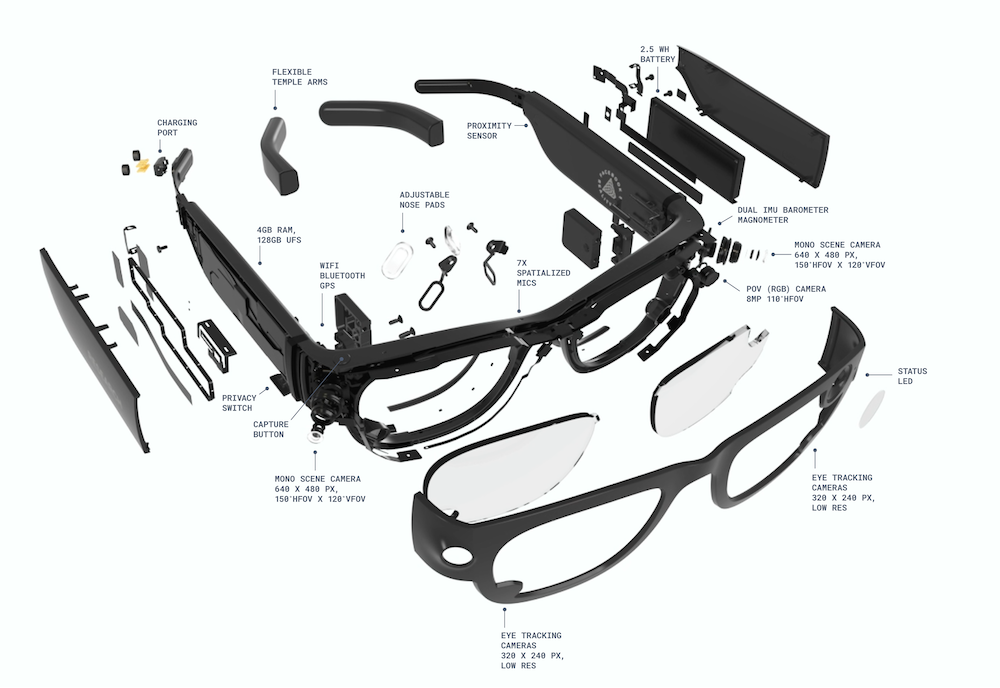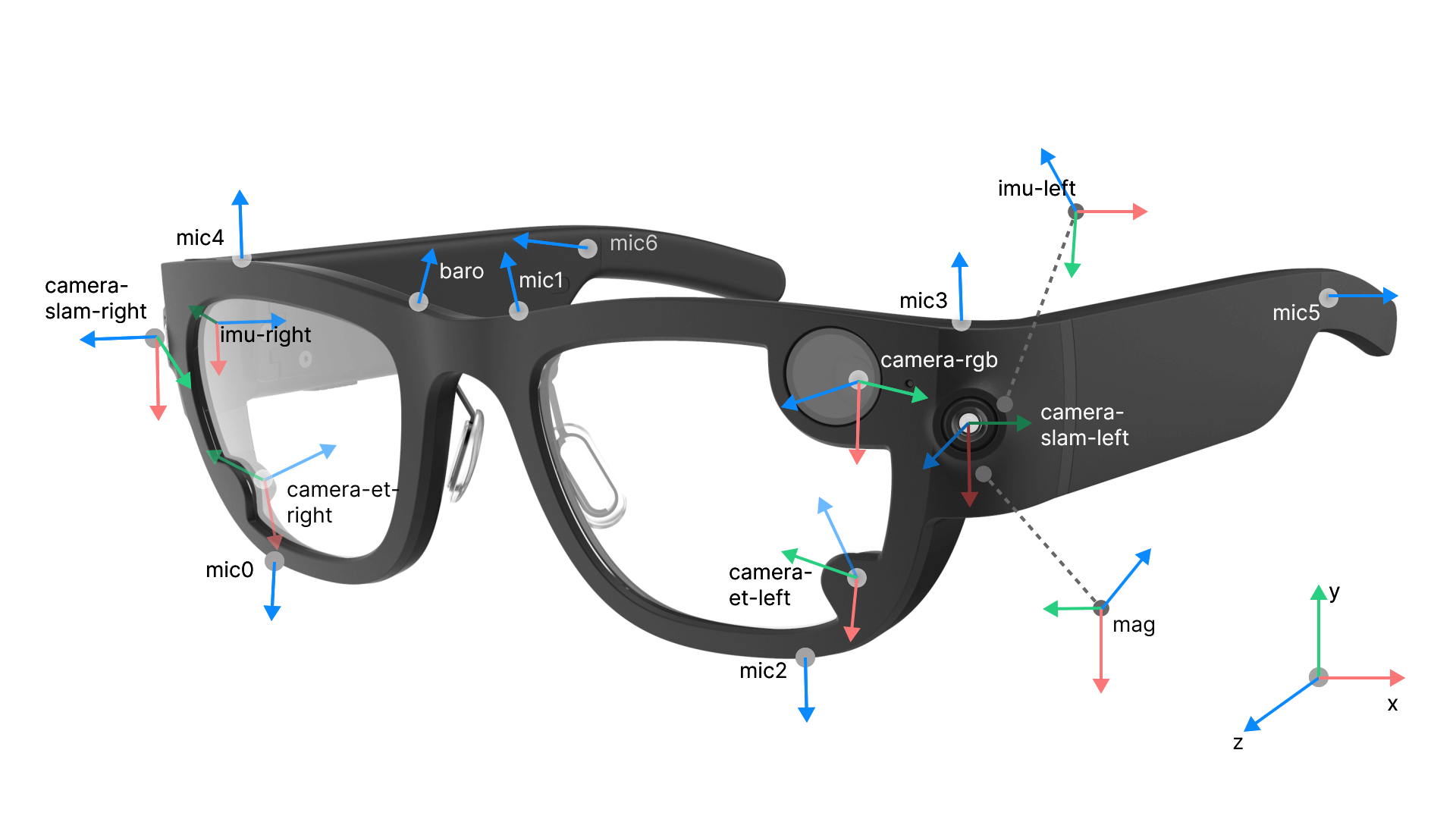Project Aria Hardware Specifications
Project Aria glasses have five cameras (two Mono Scene, one RGB, and two Eye Tracking cameras) as well as non-visual sensors (two IMUs, magnetometer, barometer, GPS, Wi-Fi beacon, Bluetooth beacon and Microphones). Mono Scene Cameras are often used to support SLAM algorithms, but they can have other applications.
The glasses support multiple recording profiles that enable users to choose which sensors to record with, as well as what settings to use.

Figure 1: Project Aria Glasses Sensor Diagram
Sensor specifications
Visual sensors
The following table summarizes the specs for the five glasses on Aria glasses (two Mono Scene/SLAM, one RGB, and two ET cameras).
Table 1: Aria Glasses Camera Specs
| Camera | HFOV (deg) | VFOV (deg) | IFOV (deg/pix) | Maximum resolution (pix) | Downsampled resolution (pix) | Max frame rate (FPS) | Nominal frame rate (FPS) | Shutter |
|---|---|---|---|---|---|---|---|---|
| Mono Scene (x2) | 150 | 120 | 0.26 | 640x480 | - | 30 | 10 | global |
| RGB (x1) | 110 | 110 | 0.038 | 2880x2880 | 1408x1408 | 30 | 10 | rolling |
| ET (x2) | 64 | 48 | 0.2 | 640x480 | 320x240 | 90 | 10 | global |
Cameras on Project Aria devices are installed sideways. Project Aria Tools visualizers rotate the images to show a more natural view.
Non-visual sensors
The non-visual sensors in Aria glasses are:
- Two IMUs operating at 1000Hz and 800Hz respectively
- One Magnetometer operating at 10Hz
- One barometer operating at 50Hz
- Seven-channel spatial microphone array with a sampling rate of 48kHz
- The microphone also has a stereo mode where only two channels record
- One GPS receiver, Wi-Fi beacon, and Bluetooth beacon.
All cameras, as well as the IMU, magnetometer, barometer and microphone are calibrated and all sensor measurements are timestamped on a common clock at nanosecond resolution. The SLAM and RGB cameras have fisheye lenses to maximize the visible field of view.
Coordinate systems
Applications like stereo vision and navigation usually handle 2D and 3D points in different spaces, and transformations need to be conducted between them. With Project Aria data, we attach a local R3 coordinate frame to each sensor.

Figure 2: Sensors and Sensor Directions on Project Aria Devices
To find out more about the coordinate systems and access calibration data, go to:
Other hardware specifications
Compute
- Qualcomm SD835, 4GB RAM, 128GB storage
- Flash memory (UFS)
- Android 7.1
- SW configurable user button and switch
Weight & Size
75g in two sizes 147mm and 152mm frame width, with adjustable nose pads and temple arms (87% fit coverage).
Visual Correction
Removable lenses with plano (Non-Rx) or single vision Rx correction [-4.5D to +3.5D].
Battery Life
Capacity is 2.5Wh. Operating time depends on the recording profile. Battery life is 1.5 hours of continuous recording + 30 hours standby when using profile 0:
- 10 FPS ET x 2
- 10 FPS Mono Scene (SLAM) x 2
- 1 FPS RGB 8MP
- IMU, Wi-Fi + GPS and 7-channel audio on at nominal FPS
Aria glasses connects to USB via a magnetic connector on the right temple arm.